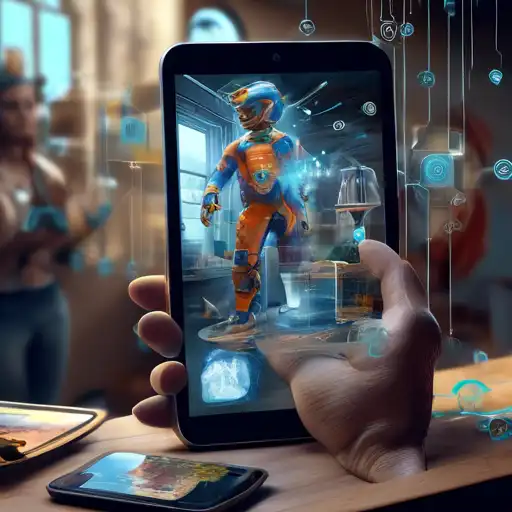Introduction to Augmented Reality
Augmented Reality (AR) is transforming the way we interact with the world around us. By overlaying digital information onto the physical environment, AR creates a blended experience that enhances our perception of reality. This technology is not just a futuristic concept but is already being integrated into various sectors, including education, healthcare, and retail.
How Augmented Reality Works
At its core, AR technology uses sensors and algorithms to detect the user's environment and superimpose digital content in real-time. This can be achieved through devices like smartphones, tablets, or specialized AR glasses. The seamless integration of digital and physical worlds opens up endless possibilities for interactive experiences.
Applications of Augmented Reality
AR is revolutionizing industries by providing innovative solutions to traditional problems. In education, AR can bring textbooks to life, making learning more engaging. In healthcare, it assists surgeons with complex procedures by providing real-time, 3D visualizations. Retailers are using AR to offer virtual try-ons, enhancing the shopping experience.
Education
Augmented Reality in education creates interactive learning environments. Students can explore historical events, dissect virtual frogs, or visualize complex scientific concepts, making education more accessible and fun.
Healthcare
In healthcare, AR provides surgeons with critical information during operations, improving precision and outcomes. It also aids in medical training, allowing students to practice procedures in a controlled, virtual environment.
Retail
The retail sector benefits from AR by offering customers the ability to try products virtually before purchasing. This not only enhances customer satisfaction but also reduces return rates.
The Future of Augmented Reality
The potential of AR is limitless. With advancements in technology, we can expect more immersive and interactive AR experiences. The integration of AR with other technologies like AI and IoT will further blur the lines between the digital and physical worlds, creating smarter and more connected environments.
Conclusion
Augmented Reality is more than just a technological innovation; it's a new way of experiencing the world. As AR continues to evolve, it will play a pivotal role in shaping the future of various industries, making our interactions with the digital and physical worlds more seamless and intuitive.
For more insights into how technology is changing our lives, check out our articles on Digital Innovation and Tech Trends.
